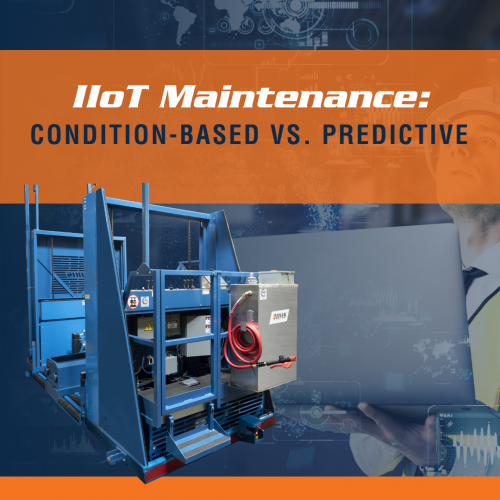We use cookies to make your experience better. To comply with the new e-Privacy directive, we need to ask for your consent to set the cookies. Learn more.
IIoT Maintenance: Condition-Based vs. Predictive

However, some confusion remains regarding the two major types of IIoT maintenance: condition-based and predictive. While some use these terms interchangeably, they’re actually very different — although they both have advantage over preventive maintenance schedules. Here’s what you need to know about condition-based and predictive maintenance, and the differences between them:
- Condition-based maintenance requires smart sensors embedded in key equipment systems. These sensors monitor conditions and send alarms when they reach certain thresholds — at which point operators, recieving these alarms on HMIs or through cloud-based portals, dispatch maintenance teams to conduct necessary upkeep.
For instance, BHS Operator Aboard Battery Extractors include sensors in the oil system. When certain conditions occur — oil that surpasses a certain temperature, or flow-rate slowing at the filter — the sensors generate a notification through the BHS IIoT portal. Operators and managers can schedule an oil change before adverse conditions affect overall operation.
- Predictive maintenance adds an additional element to a condition-based maintenance system: advanced algorithms that use big-data calculations to recognize pre-failure conditions before problems occur.
Predictive maintenance arrangements collect data not just from a single system, but from the entire range of sensors within a machine. Thanks to machine learning, they recognize combinations of measurements — not just temperature, for instance, but temperature, vibration levels, and power usage — that predict failure states.
These predictive algorithms can be set to warn users well in advance of critical maintenance requirements, allowing them to schedule the work at the most convenient time, like after-hours or during historically slow times.
Both predictive and condition-based IIoT maintenance systems provide more flexibility than traditional scheduled maintenance. Users can adjust perameters to give them a broader scheduling window for equipment upkeep. Crucially, they also continuously monitor real-time conditions within equipment. Contrast this with preventive maintenance schedules, which are written for the most likely scenarios, but can’t help with flukes or rare events that affect internal systems.
By monitoring actual conditions as they change, IIoT maintenance prevents damage to critical infrastructure. Along with savings associated with increased uptimes, these advantages allow IIoT maintenance systems to pay for themselves quickly.
So which type of IIoT maintenance should you employ? Most industrial operations should probably start with condition-based maintenance, and only in their most valuable assets, to control costs. The advanced algorithms required for preventive maintenance are often part of a broader IIoT cloud environment, leading to higher price tags and more of a barrier to entry. Condition-based programs just require sensors that can transmit data, integrated HMI’s, and/or cloud-based portals that allow access to that data.
To learn more about how IIoT maintenance solutions from BHS can improve profitability for forklift battery rooms, material handling applications, and distributors in the electrical industry, click here, or call the BHS sales team at 1.800.BHS.9500.
